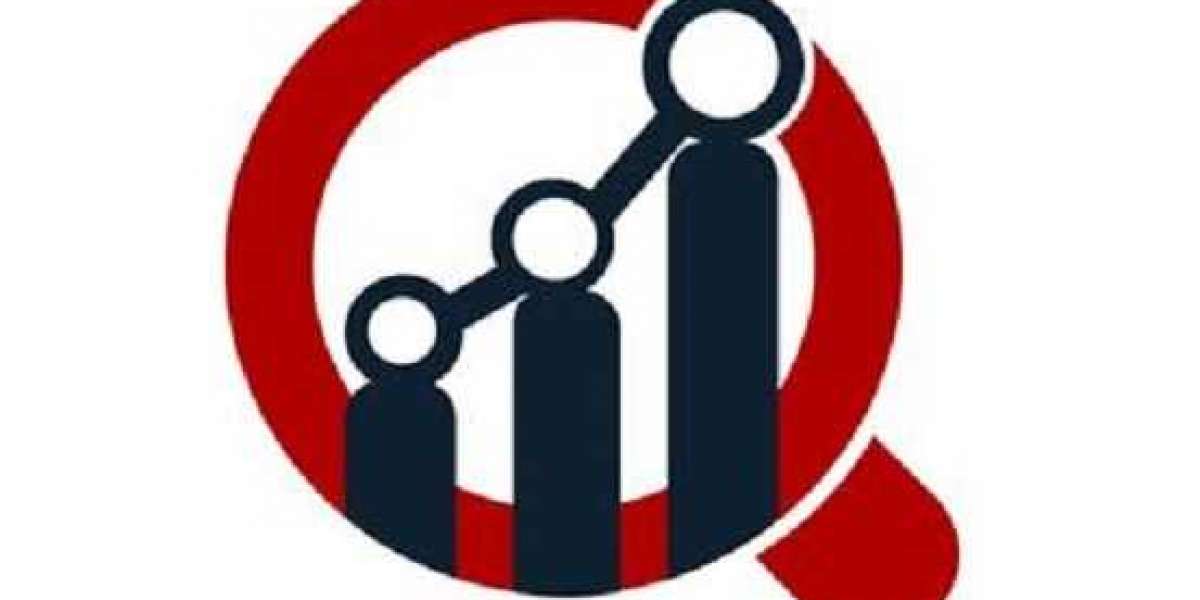The Future of Healthcare Payer Analytics in 2025
The healthcare industry is undergoing significant transformation, driven by evolving technologies, data integration, and regulatory reforms. Among the areas experiencing the most change is the healthcare payer space, where analytics has become a crucial element in decision-making and cost management. As we look to 2025, the role of healthcare payer analytics is set to expand, providing deeper insights, greater efficiencies, and improved care for patients. This blog explores the future of healthcare payer analytics and what it means for the industry.
The Current Landscape of Healthcare Payer Analytics
Healthcare payer analytics refers to the use of data and analytics tools to help insurers, health plans, and other stakeholders in the healthcare system make more informed decisions. These analytics typically encompass claims data, patient outcomes, financial performance, and more. The goal is to enhance cost-effectiveness, optimize care, and streamline operations. Payers use analytics to evaluate risk, predict patient needs, detect fraud, and ensure regulatory compliance.
However, as healthcare systems shift toward more patient-centered and value-based care models, the need for more advanced and nuanced analytics will intensify. The ability to harness large volumes of complex data, from electronic health records (EHRs) to genomic data and social determinants of health (SDOH), will be essential in the years to come.
AI and Machine Learning Will Drive Precision and Efficiency
By 2025, we can expect artificial intelligence (AI) and machine learning (ML) to be at the core of healthcare payer analytics. These technologies enable the processing of vast amounts of data at speeds and accuracies far beyond human capabilities. With the use of AI and ML, healthcare payers will be able to predict health outcomes more accurately, detect fraud with greater precision, and optimize care management strategies.
For example, AI algorithms can predict which patients are most likely to develop chronic conditions, allowing payers to intervene earlier and potentially prevent the need for expensive treatments. Machine learning can also identify patterns in claims data that might indicate fraud or inefficiencies, providing payers with real-time alerts to take corrective action.
Moreover, AI-driven tools can help healthcare payers better understand patient preferences and needs, enabling more personalized care plans. By analyzing data from various sources, such as wearable devices, apps, and social media, payers can gain a holistic view of their members, leading to more accurate and tailored healthcare plans.
Predictive Analytics Will Empower Proactive Decision-Making
One of the most exciting trends in healthcare payer analytics is the growing use of predictive analytics. Predictive models, fueled by data from past behaviors and patient interactions, will allow payers to anticipate future health events and allocate resources accordingly. This shift from reactive to proactive decision-making will enable payers to manage costs more effectively, improve patient outcomes, and reduce the burden on the healthcare system.
For instance, predictive models can identify high-risk patients who may require expensive emergency care in the future. By addressing these risks early on, healthcare payers can reduce hospital readmissions and other avoidable healthcare expenditures. Predictive analytics also help to optimize claims processing and identify potential gaps in care, enabling payers to better manage financial risk while improving overall service delivery.
Integration of Social Determinants of Health (SDOH)
In recent years, there has been a growing recognition that health outcomes are influenced not just by clinical care, but also by social factors such as income, education, housing, and access to healthy food. By 2025, healthcare payer analytics will increasingly incorporate social determinants of health (SDOH) into their data models. This will allow payers to gain a more comprehensive understanding of their members' health needs and better tailor care solutions.
Incorporating SDOH data into payer analytics platforms will enable the identification of vulnerable populations, such as individuals living in poverty or facing housing instability. With this information, payers can implement targeted interventions, such as offering additional support services or adjusting coverage options, that can improve health outcomes and reduce healthcare costs in the long run.
Greater Emphasis on Data Privacy and Security
As healthcare payer analytics continues to evolve, the importance of data privacy and security will become even more critical. Healthcare organizations are required to comply with strict regulations, such as the Health Insurance Portability and Accountability Act (HIPAA), which protects patient information. As the volume of data grows, payers must ensure that they have robust security measures in place to safeguard sensitive health data.
In the future, healthcare payers will likely invest in more sophisticated encryption techniques, multi-factor authentication, and blockchain technology to enhance data security. Ensuring patient confidentiality will not only help comply with regulatory requirements but will also build trust with members who may be concerned about the security of their personal health information.
Conclusion
The future of healthcare payer analytics in 2025 is an exciting one, marked by advancements in AI, machine learning, predictive analytics, and the integration of social determinants of health. These innovations will enable payers to make more informed decisions, reduce costs, and improve patient care. As healthcare continues to shift towards value-based care models, healthcare payer analytics will become an indispensable tool for navigating the complexities of the evolving healthcare landscape. The key to success will lie in the ability to harness and interpret data effectively while maintaining a strong commitment to privacy and security.
Blog 2: The Impact of Big Data on Healthcare Payer Decision-Making
Big data has already made a significant impact across industries, and healthcare is no exception. In the payer sector, the ability to harness vast amounts of data from multiple sources is transforming how insurers and health plans make decisions. As we move toward 2025, the role of big data in healthcare payer decision-making will only grow, providing new opportunities for improving efficiency, optimizing care, and reducing costs.
What is Big Data in Healthcare?
Big data in healthcare refers to the large and complex sets of data generated from various sources, including electronic health records (EHRs), insurance claims, patient surveys, and even wearable devices. These data sets are typically too large or complex for traditional data processing methods to handle, which is where advanced analytics and machine learning come into play.
The ability to collect and analyze big data allows healthcare payers to gain deep insights into patient behaviors, healthcare trends, and financial performance. By leveraging big data, payers can make more accurate and timely decisions, resulting in improved operational efficiency and better patient outcomes.
Enhancing Risk Management and Cost Control
One of the primary areas where big data is making an impact is in risk management. Healthcare payers traditionally use risk models to assess the likelihood that a member will incur high medical costs. However, with big data, these models can be made more accurate and nuanced. By analyzing large datasets, payers can identify patterns and correlations that may not be immediately obvious, allowing for more precise risk assessments.
For instance, by examining claims data and health trends, payers can predict which patients are at higher risk for certain diseases or conditions. Armed with this knowledge, payers can proactively manage care and direct resources to those most in need, potentially preventing expensive medical episodes before they occur. Additionally, big data analytics can help identify areas of unnecessary spending or fraud, enabling payers to implement cost-control measures that improve both financial sustainability and care quality.
Personalizing Patient Care Plans
Another significant benefit of big data is the ability to personalize care plans for patients. With the wealth of information available, payers can segment their member populations based on various factors such as medical history, demographics, and social determinants of health. This segmentation allows for more targeted interventions and tailored care strategies.
For example, payers can use big data to identify patients who may benefit from chronic disease management programs or those who need additional support due to social or environmental factors. By personalizing care plans, healthcare payers can improve patient satisfaction, enhance clinical outcomes, and reduce unnecessary hospitalizations or readmissions.
Improving Provider Network Management
Big data also has a significant impact on provider network management. By analyzing data on provider performance, patient outcomes, and patient satisfaction, payers can make better decisions about which providers to include in their networks. This allows healthcare payers to ensure that their members have access to high-quality care while controlling costs.
Additionally, big data can help identify gaps in care and inefficiencies in the delivery of services. For example, payers can analyze claims data to identify patterns of over-utilization or under-utilization of certain healthcare services, and then adjust provider networks or care delivery models accordingly.
Real-Time Decision-Making
In the fast-paced world of healthcare, real-time decision-making is becoming increasingly important. With the power of big data analytics, payers can make more timely and informed decisions. For example, real-time data on patient claims and outcomes can help payers adjust coverage policies or make changes to care management strategies on the fly.
This agility enables payers to stay ahead of changing healthcare needs and trends, ensuring that they can respond quickly to emerging challenges and opportunities. Real-time analytics also improve operational efficiency, allowing payers to streamline processes and reduce administrative costs.
Conclusion
Big data is fundamentally reshaping the healthcare payer landscape, enabling more informed decision-making, personalized care, and better cost management. By leveraging the power of big data, healthcare payers can optimize their operations, improve patient outcomes, and navigate the increasingly complex healthcare environment. As we move toward 2025, the role of big data will continue to expand, making it an essential tool for payers looking to stay competitive and deliver high-quality, cost-effective care.







